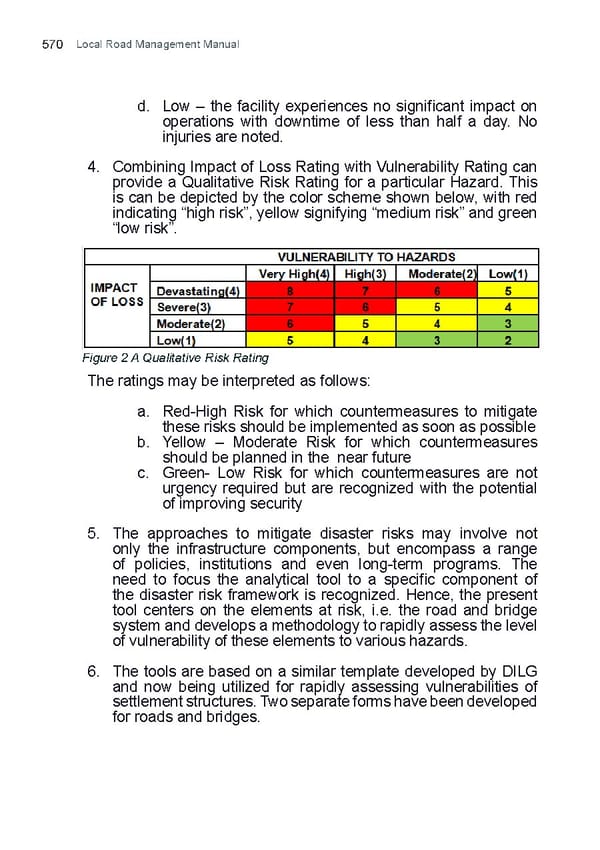Local Road Management Manual 570 d. Low – the facility experiences no significant impact on operations with downtime of less than half a day. No injuries are noted. 4. Combining Impact of Loss Rating with Vulnerability Rating can provide a Qualitative Risk Rating for a particular Hazard. This is can be depicted by the color scheme shown below, with red indicating “high risk”, yellow signifying “medium risk” and green “low risk”. Figure 2 A Qualitative Risk Rating The ratings may be interpreted as follows: a. Red-High Risk for which countermeasures to mitigate these risks should be implemented as soon as possible b. Yellow – Moderate Risk for which countermeasures should be planned in the near future c. Green- Low Risk for which countermeasures are not urgency required but are recognized with the potential of improving security 5. The approaches to mitigate disaster risks may involve not only the infrastructure components, but encompass a range of policies, institutions and even long-term programs. The need to focus the analytical tool to a specific component of the disaster risk framework is recognized. Hence, the present tool centers on the elements at risk, i.e. the road and bridge system and develops a methodology to rapidly assess the level of vulnerability of these elements to various hazards. 6. The tools are based on a similar template developed by DILG and now being utilized for rapidly assessing vulnerabilities of settlement structures. Two separate forms have been developed for roads and bridges.
 Local Road Management Manual Page 570 Page 572
Local Road Management Manual Page 570 Page 572